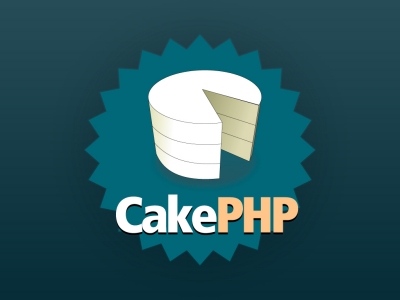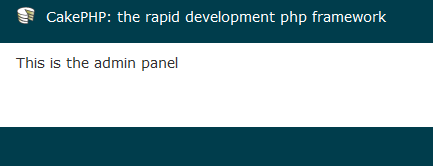Starting a new, personal project in PHP, I wanted to try out a new framework for the fun of it. After doing a bit of review on many available frameworks, and ruling out the ones I have already used (Zend and OpenAvanti), I settled on CakePHP.

Installation and basic setup were a breeze, and I found the online documentation and tutorials helpful. Very early on, however, as I thought I was still trying to accomplish basic site setup tasks, I began to run into a few road blocks. Luckily, the API documentation is quite thorough and a pleasure to read, so I eventually got through the initial “new framework pains”. In this post, I will walk you through my basic setup and hopefully answer a few questions that may pop up for you after those initial inquiries into the docs.
Here is what I wanted to accomplish (This example isn’t meant to showcase fantastic architecture. It’s just to serve the purpose of making sure I knew how Cake was going to handle things. And believe me, it took several tries):
- Have a public home page with a link to the admin panel
- The admin panel requires user login
Simple, right? So let’s get started. Note that I’m using CakePHP 2.0.
The first thing we want to do is tell Cake that we intend to use the built-in Authorization Component. I chose to do that in the AppController, so that it is available to all controllers. Copy the default AppController file from the lib/Cake/Controller folder into the app/Controller folder. Within the class declaration, add the following code:
var $components = array('Auth', 'Session');
The $components variable takes an array of components, one of which we’ve specified as Auth.
Next we want the site to use our home controller as the default. Cake comes pre-built to use the pages controller, specified in the app/Config/routes.php file:
Router::connect('/', array('controller' => 'pages', 'action' => 'display', 'home'));
We are going to change this to:
Router::connect('/', array('controller' => 'home', 'action' => 'index'));
Now that we are setup to view home/index once we navigate to our site, let’s define the home controller in app/Controller/home_controller.php:
class HomeController extends AppController {
var $uses = null;
function beforeFilter() {
$this->Auth->allow( 'index' );
}
function index() {
}
}
Since the Auth component is in force for all controllers, we need to tell it to relax for the home/index action. We do this with the beforeFilter() function.
Also note the setting of $uses to null. Controllers usually have this set to the table they will be referencing. In this case, it makes no sense to have a “home” table in the database, so we must tell the controller that we are not going to be using a table.
Now we just need a view to show our admin panel link (located in app/View/home/index.ctp):
<p>This is the home/index view</p> <p> <a href="/admin">Admin Panel</a> </p>
If you navigate to your site, you should see the admin panel link.

What we want to happen here is for a login screen to display if the anonymous user clicks the admin panel link. We’ve already told Cake that we are using Auth. Now we just have to do a couple of things to hook up a login screen and authenticate a user.
First, Auth is expecting a users controller (app/controller/users_controller.php):
class UsersController extends AppController {
var $name = 'Users';
function login() {
if ($this->request->is('post')) {
if ($this->Auth->login()) {
return $this->redirect($this->Auth->redirect());
}
else {
$this->Session->setFlash(__('Username or password is incorrect'), 'default', array(), 'auth');
}
}
}
function logout() {
$this->redirect( $this->Auth->logout() );
}
}
Setup the login view (app/View/users/login.ctp):
echo $this->Session->flash( 'Auth' ); echo $this->Form->create( 'User' ); echo $this->Form->input( 'username' ); echo $this->Form->input( 'password' ); echo $this->Form->end( 'Login' );
Note: To insert a password into your database that can use for login, use Cake’s built-in AuthComponent::password(‘your_password’) function to determine the hash.
Let’s setup the admin panel. Create the admin controller (app/Controller/admin_controller.php):
class AdminController extends AppController {
var $uses = null;
function index() {
}
}
And the view (app/View/admin/index.ctp):
<p>This is the admin panel</p>
Now if you click the admin panel link on the home page, you should be greeted by a login screen.

After a successful login, you should then see the admin panel.

So that is how I got a very basic setup running with CakePHP. Check out the great documentation at the official site if you run into trouble, and even start browsing the API. It’s good stuff.
Andrew Perkins just posted a screencast on YouTube that goes into this subject in great detail. It’s an excellent video and one you should check out if you are getting your feet wet with Cake. http://www.youtube.com/watch?v=zvwQGZ1BxdM